 Iran’s Attack on Israel
Iran’s Attack on Israel

Jewish Geography

Jewish Geography
13 min read
As France heads to the polls, here are some fascinating points about Jews and France through the ages.
As France goes to the polls in the first round of its presidential election, France’s 500,000-strong Jewish community is in the spotlight: two front-runners, Marine Le Pen and Jean Luc Melenchon, have been accused of making high-profile anti-Semitic comments.
Long before France’s unpredictable election, Jews have been making history in France. Here are 11 interesting facts about Jews and France through the ages.
Rashi, as the great Medieval Rabbi Shlomo Yitzhaki is known, is the most widely consulted Jewish rabbi of all time. His commentaries on the Bible and Talmud are considered crucial to understanding these Jewish texts. Rashi’s explanations help us understand the Torah and at times, a knowledge of French can help us understand Rashi.
That’s because this greatest of Jewish scholars had humble beginnings. Rashi lived in the northern French town of Troyes from 1040 to 1105. Out of a total population of 10,000, Troyes was also home to about 100 Jewish families. Jews travelled from far and wide to consult Rashi. Many of these visiting Jews lodged with nearby Christian families.
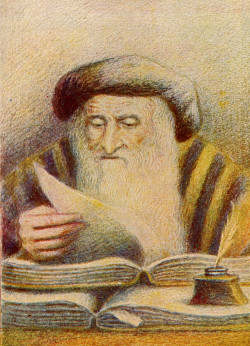 In some respects, Rashi was very French. He earned his living as a vintner (wine maker), and incorporated some French words in his commentaries. A typical example comes in Rashi’s discussion of the Torah’s description of the beautiful golden Ark that our ancestors were commanded to build, which stood in the Temple in Jerusalem. Its gold ornaments were joined together, or soulderix (soldered in Old French), Rashi explained (Rashi on Ex. 24:18).
In some respects, Rashi was very French. He earned his living as a vintner (wine maker), and incorporated some French words in his commentaries. A typical example comes in Rashi’s discussion of the Torah’s description of the beautiful golden Ark that our ancestors were commanded to build, which stood in the Temple in Jerusalem. Its gold ornaments were joined together, or soulderix (soldered in Old French), Rashi explained (Rashi on Ex. 24:18).
Rashi’s sons-in-law and grandsons – who continued to live in northern France – became rabbis of nearly his towering stature, penning additional commentaries on the Torah and leading European Jewry. Their scholarship continues to define Jewish life to this day.
In the year 1239, Paris was witness to a very strange trial; the Talmud was accused of insulting Christianity.
The Talmud was defended by the Chief Rabbi of Paris, Rabbi Yechiel ben Joseph, though there were restrictions on what Rabbi Yechiel could say. Leading the charge against the Talmud was Nicholas Donin, a Jewish convert to Christianity who seemingly harbored an intense hatred of his fellow Jews or, possibly, a desire to impress his new Christian co-religionists. He was encouraged to make fun of the Talmud, quoting its text out of context and distorting its meaning. Presiding over the trial was none other than the Queen Mother of France, Blanche of Castille, and several Archbishops.
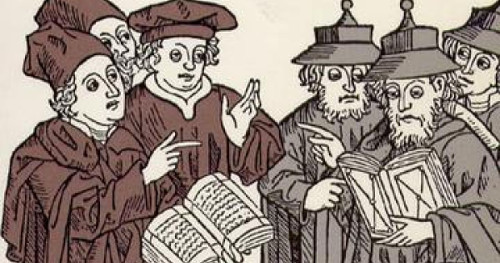
After hearing the “evidence”, the Talmud was found guilty and condemned as “dangerous to Christianity”. Volumes of the Talmud were confiscated. In 1242, 24 cartloads of hand-written tractates of the Talmud, representing countless thousands of hours of work, were brought to a public square in central Paris and burned.
In 1095, Pope Urban II called for a holy Crusade to conquer Jerusalem and wrest it from Muslim rule. (The temptation to launch a crusade might have been closer to home. Historians note that the harvest of 1095 was particularly bad in northern Europe; calling for a crusade was a way to distract the population and encourage them to plunder wealth in other lands.)
 100,000 men signed up for the Crusade. (The term “crusade” refers to the French word for the crosses they sewed on their clothes.) Soon, their attention turned from conquering Jerusalem to attacking Jewish communities along their path. In three waves, spanning a hundred years, over ten thousand Jews were murdered in Europe and Israel. Frenzied demonization of and violence against Jews became a hallmark of the Crusader period.
100,000 men signed up for the Crusade. (The term “crusade” refers to the French word for the crosses they sewed on their clothes.) Soon, their attention turned from conquering Jerusalem to attacking Jewish communities along their path. In three waves, spanning a hundred years, over ten thousand Jews were murdered in Europe and Israel. Frenzied demonization of and violence against Jews became a hallmark of the Crusader period.
France’s Jews were periodically expelled during this intense period of Jew-hatred, as well. In 1182, and again regularly in the 13th Century, Jews were forced to leave French cities, only to be let in again a few years later. In 1306, a more organized expulsion was decreed by France’s King Philip. Short of money after war with Flanders, King Philip decided to force French Jews to flee, and compound their property.
The decree was handed down on July 21, 1306, which was Tisha B’Av, the Jewish day of mourning on which we mourn the destruction of both the First and Second Temples in Jerusalem, as well as other calamitous events in Jewish history. The following day, July 22, 1306, 100,000 Jews were arrested. France’s Jews were ordered to leave the country within one month or face death. French Jews were allowed to leave only 12 sous (cents) apiece. Their property was confiscated, auctioned off, and all proceeds reverted to the French crown.
(King Philip’s decree was reversed by his son King Louis, but Jews continued to be banned from France and were ordered to leave in 1322 and 1394 again, before returning slowly over the subsequent years.)
Following the expulsion of Jews from Spain in 1492, and the introduction of the Inquisition into Portugal in 1536, some Jews fled to the French town of Bayonne, near the Spanish-French border. There, they used their contacts with Jewish traders in the New World to import materials and know-how to process cocoa, a New World product which was just starting to take Europe by storm.
Bayonne Jews adapted cocoa recipes to European tastes, creating sweet versions of chocolate and using additives like milk, butter and nuts. Jews built the Bayonne area into a chocolate center, but their very success undid them: once local Christians learned how to make chocolates too, they petitioned local authorities to ban Jews from the chocolate industry.

Jews were only permitted to resume making chocolate in 1767 when a court annulled the decree. In 2013, the town of Bayonne formally recognized the contribution of Jews to the region’s famed chocolates. “Since we are the inheritors of the Jews’ savoir faire”, explained Jean-Michel Barate, head of Bayonne’s Chocolate Academy, “it was our duty to thank them….” and to right the historical wrong of overlooking the fact that it was Jewish refugees who created sweet chocolate confections as we know them today.
Although Jews were banned from France for many years after the 14th Century, by the 1700s about 40,000 Jews lived in France, particularly in Bordeaux and Avignon, which never formally expelled their Jewish inhabitants.
These 40,000 Jews became the first Jews in European history to gain full and equal rights with the French Revolution. The decision wasn’t easy: France’s new rulers deliberated for over two years about whether they should extend their new regime’s ideal of “Liberty, Equality, Fraternity” to Jews. When they did, in 1791, it was seemingly with some regret: “The Jews” explained a leading revolutionary, “conscious of the error of their ways, have felt the need for a fatherland; we have offered them ours.”
The Emperor Napoleon styled himself “defender” of the Jews, noting that he had (unsuccessfully) tried to conquer the Land of Israel for France. Back home, even though Jews were nominally recognized as citizens, Napoleon harbored much of the intense anti-Jewish prejudice that was typical in France at the time.
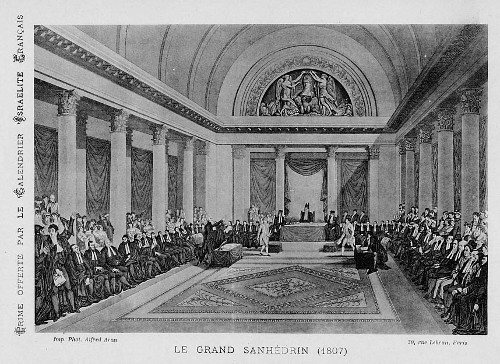
Seeking to assure himself that Jews were indeed “Frenchmen”, Napoleon decided to invite Jews from throughout France to participate in what Napoleon called, with much pomp, a “National Assembly of Notables”. Napoleon deliberately scheduled the Assembly for a Saturday; the “notables” he invited turned up despite the assembly’s scheduling on Shabbat, and voted yes or no to a series of questions Napoleon had devised to ascertain whether Jews could indeed be French. The “notables” were asked whether Jews could engage in manual labor, whether they could marry Christian women, whether Jews would help defend France, etc.
Not satisfied with his Assembly, Napoleon sent word to the governors of France to elect Jewish representatives to a new group, which Napoleon grandly named the Sanhedrin, the ancient Jewish court that governed Jewish conduct for hundreds of years. Like the Sanhedrin of old, this new “Sanhedrin” contained 71 members, was governed by a leader (picked by Napoleon) whom he gave the traditional Hebrew title Nasi, or “prince”, and was meant to issue new decrees for the Jewish people.

Napoleon’s “Sanhedrin” met in Paris with great pomp, and the puppets making up this group did indeed go along with many of Napoleon’s requested declarations. They declared that Jews serving in the French army were free of Jewish mitzvot, or commandments, and (echoing long-held prejudice against Jews, who’d long been forced into the money-lending business by European rulers) declared money-lending illegal for Jews. Even the stooges on Napoleon’s “Sanhedrin” drew the line at some of the Emperor’s requests, refusing to countenance mixed marriages, for instance.
Despite the assurances of this “Sanhedrin”, Napoleon went on to issue a host of infamous Jewish decrees, restricting Jewish rights to live in certain parts of France, suspending repayment of debts to Jews for ten years, and limiting Jews’ rights to go into some areas of business.
Another legacy of Napoleon’s rule was an official list of approved names that could be given to babies born in France. Most of these were Christian saints’ names, though a number of Jewish names were included on the list, as well.
The list was abolished in 1993, though even in recent years French authorities have banned some names. In 2016, for instance, a French judge ruled against two parents who wanted to name their newborn Mohamed Merah, after the terrorist who murdered a rabbi and three children outside of a Jewish school in the French city of Toulouse in 2012.
Jews were ostensibly equal French citizens, but the dramatic 1894 trial of Captain Alfred Dreyfus exposed deep anti-Jewish hatred in France. After being arrested on manufactured charges of spying for Germany (Dreyfus was later exonerated; the real culprit had fled to England and some of Dreyfus’ fellow soldiers forged evidence against him), Dreyfus was publicly humiliated and sent to prison, while a mob of French men and women shouted “Death to Jews!”
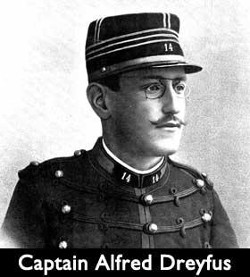 Throughout Dreyfus’ trial, French Catholic authorities continued to stir up Jew-hatred. The intense bitterness made many in France conclude there was little future for Jews in France. Emile Zola, the non-Jewish great French author, wrote in 1896 “For some years I have been following with increasing surprise and disgust the campaign which some people are trying to carry on in France against the Jews. This seems to me monstrous….” Two years later, Zola wrote his famous open letter, beginning with J’accuse, or “I accuse”, directed against French President France Felix Faure, complaining about irregularities in Dreyfus’ trial. Zola was prosecuted and found guilty of libel and fled to England for a year to avoid imprisonment.
Throughout Dreyfus’ trial, French Catholic authorities continued to stir up Jew-hatred. The intense bitterness made many in France conclude there was little future for Jews in France. Emile Zola, the non-Jewish great French author, wrote in 1896 “For some years I have been following with increasing surprise and disgust the campaign which some people are trying to carry on in France against the Jews. This seems to me monstrous….” Two years later, Zola wrote his famous open letter, beginning with J’accuse, or “I accuse”, directed against French President France Felix Faure, complaining about irregularities in Dreyfus’ trial. Zola was prosecuted and found guilty of libel and fled to England for a year to avoid imprisonment.

Another observer came to a similar conclusion during Dreyfus’ trial, realizing that Jews faced an uncertain future in France. Theodore Herzl was a young reporter for the Viennese newspaper the Neue Freie Presse, and he covered Dreyfus’ trial in Paris. He later wrote that the chants of “Death to Jews” shook him to the core, and helped him realize that only a Jewish state could provide security and safety for the world’s Jews. In 1897, Herzl organized a Zionist Congress in Zurich, where he called for the reestablishment of a Jewish country.
With World War II looming, France became a destination for desperate Jewish refugees fleeing Germany and Eastern Europe. From a Jewish population of about 80,000 in 1900, by 1939 France’s Jewish population had swelled to 300,000 as Jews fled to France for safety.
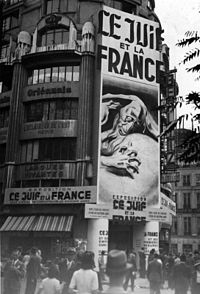 Tragically, that safety proved illusory. After Germany invaded France, it divided the country into a northern, “occupied” zone, and a southern “free” zone which was allied with Nazi Germany. Both areas of France willingly participated in the deportation of Jews from France; in the nominally independent southern part of France, it was French policemen and authorities who helped implement Hitler’s so-called “final solution to the Jewish ‘problem’”. Over 70,000 French Jews were sent to concentration camps; only about 2,500 survived.
Tragically, that safety proved illusory. After Germany invaded France, it divided the country into a northern, “occupied” zone, and a southern “free” zone which was allied with Nazi Germany. Both areas of France willingly participated in the deportation of Jews from France; in the nominally independent southern part of France, it was French policemen and authorities who helped implement Hitler’s so-called “final solution to the Jewish ‘problem’”. Over 70,000 French Jews were sent to concentration camps; only about 2,500 survived.
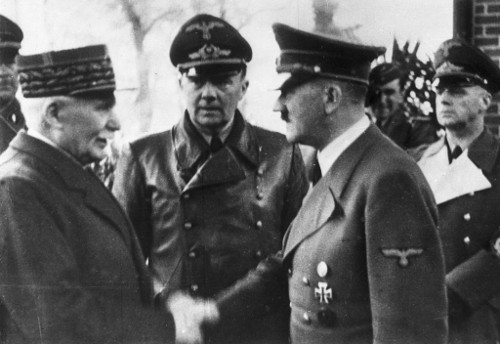
After the War, France’s devastated Jewish community was revived by an influx of Jews from former French colonies in North Africa. In the 1950s and 1960s nearly a quarter of a million Sephardi Jews moved to France from Algeria, Morocco and Tunisia.
In recent years, tragically, the call “Death to Jews!” has once more rung out in the streets of Paris and elsewhere in France.
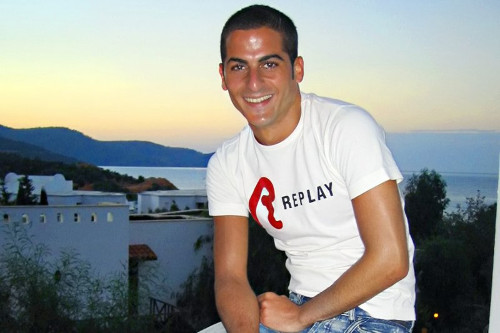
A string of horrific attacks has targeted Jews throughout France. In 2006, Ilan Halimi, a young Jewish man living in Paris, was lured into a trap by local Muslim hoodlums; he was tortured for a month in a public housing project in Paris before being murdered; it later emerged that his ordeal was an open secret in the neighborhood, but no one intervened. His mother later had Ilan buried in Israel, fearful, she explained, that if he was buried in France his grave would be desecrated by anti-Semites.
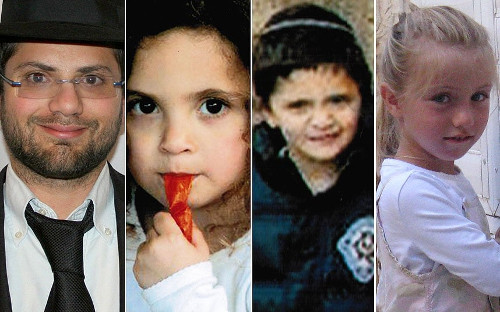
In 2012, in the central French city of Toulouse, a terrorist shot three children and a rabbi at point-blank range in front of a Jewish school. In 2014, a mob rampaging through the streets of Sarcelles, a Paris suburb, chanted “Death to Jews!”, burned Jewish-owned businesses, and surrounded a synagogue, baying for the murder of those Jews inside. For hours, scores of Jewish families cowered inside, fearing for their lives, until police finally managed to disperse the mob late that night. In 2015, terrorists murdered four hostages in a kosher synagogue in Paris. In 2017, two Jewish brothers were forced off the road in a heavily Muslim neighborhood near Paris and attacked by passers by; one of the brothers’ thumb was sawn off in the attack.
In fact, the number of anti-Jewish hate crimes is going up. In 2014, there were 423 reported hate crimes against Jews in France. In 2015, there were 851 reported anti-Jewish hate crimes.
In the face of rising hatred, more and more Jews are fleeing France. One 2016 poll found that fully 43% of French Jews are considering moving to the Jewish state. In 2014, a record-breaking 6,658 Jews moved to Israel from France. (By way of comparison, only 1,923 French Jews had moved to Israel in 2010, when the number of anti-Semitic crimes was lower.) In 2015, 7,469 French Jews moved to Israel.
As more French Jews move to the Jewish state, parts of Israel are gaining a distinctly French accent. In 2015, the Times of Israel noted that the Israeli seaside city of Netanya calls itself the “Israeli Riviera” and that in recent years, it has indeed come to resemble the famed French Riviera: “walking along its main pedestrian boulevard, one would be hard-pressed to tell it apart from its twin city of Nice” in France. French restaurants, French style – and French Jews – have given parts of Israel a very French feel.
One recent immigrant from France explained that the rising anti-Semitism in France sparked her family’s desire to move to Israel: “Here we get the feeling that we can protect ourselves. There we have the impression that we are on our own and if, God forbid, something happens we will have to manage.”
